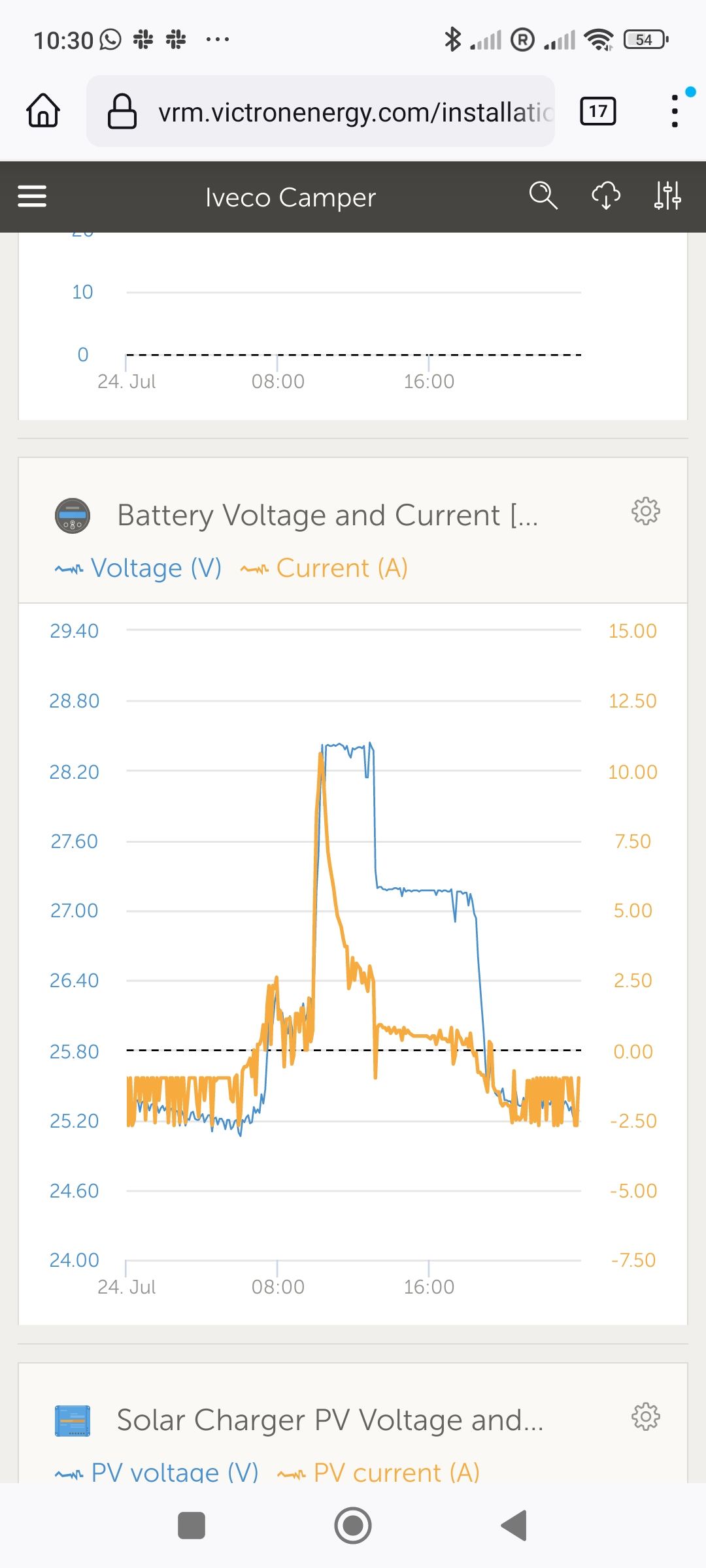I have a small installation on a boat in the Mediterranean.
2 x 120W panels into 100/30 MPPT and 2 x 80W panels into 75/15 MPPT.
I have now purchased a (cheap) solar mat. Advertised as 300W but I'm guessing 100W is more realistic. This is primarily to (slowly) charge a lithium 48V battery for an ePropulsion motor which comes with its own 48V MPPT controller.
I am wondering if I can connect the PWM controller supplied with the solar mat to my existing installation to supplement charging my 3 x 160Ah 12V house bank?
The PMW appears to supply 13.8V to the battery whereas the Victron MPPT are currently reporting about 13.2V in bulk mode which is approximately the battery voltage reported by my SmartShunt.

